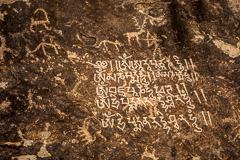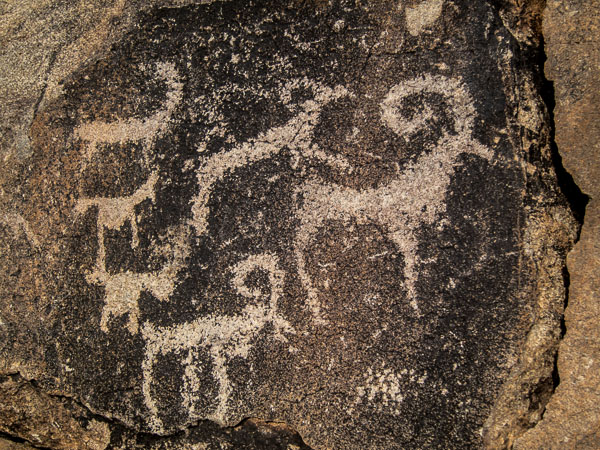Petroglyphs

Most are very old, but not all. Aside from the presence of three herders' gers, nothing is there to discourage modern people from adding to the collection, and although, quite literally, an entire mountain is available, some have felt the need to place their mark on top of the marks of those who were there before them. Among the newer additions are poor imitations of the ancient drawings—whose outlined style gives them away immediately, as well as text in Turkic, Tibetan, old Mongolian, and modern Cyrilic script. In the same thoughtless way that Bubb Smith immortalized his name among the drawings at the Great Gallery in Canyonlands National Park, Жаке has made a record of his visit to this historic site.
To confuse the issue of dating these drawings, it seems that some older drawings have been enhanced by modern helpers. Natural processes of erosion and the cracking of rock are also taking a toll. Well out onto the flat plain that meets the steep sides of the mountain, pieces of rock can be found with drawings or parts of drawings on them. More disturbing are areas where it looks as though pieces of the rock have been removed by unnatural means, either taken for their drawings or quarried for use as building material.
